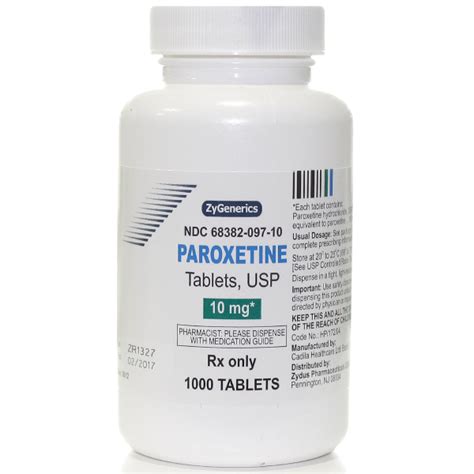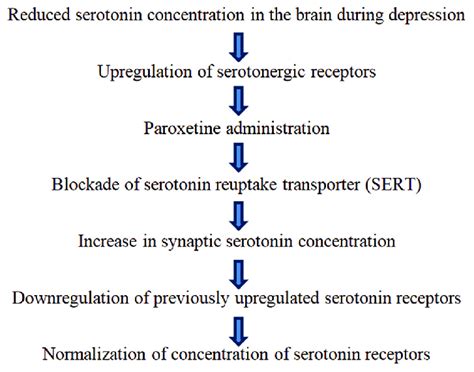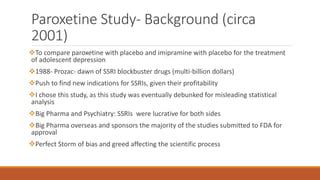Intro
Discover Paroxetine 10mg tablet uses, side effects, and dosage in this informative guide, covering anxiety, depression, and OCD treatment with selective serotonin reuptake inhibitors (SSRIs) for mental health management.
The world of pharmaceuticals is vast and complex, with numerous medications available to treat a wide range of conditions. Among these, paroxetine stands out as a commonly prescribed antidepressant, belonging to the class of selective serotonin reuptake inhibitors (SSRIs). For individuals dealing with depression, anxiety disorders, or other mental health issues, understanding the specifics of their medication is crucial for effective treatment and management. This article aims to delve into the details of the paroxetine 10mg tablet, providing a comprehensive guide for those seeking information on its uses, benefits, side effects, and more.
Paroxetine has been a staple in psychiatric treatment for decades, known for its efficacy in managing symptoms of depression, obsessive-compulsive disorder (OCD), panic disorder, and social anxiety disorder, among others. The medication works by increasing the levels of serotonin in the brain, a neurotransmitter that plays a significant role in mood regulation. By preventing the reuptake of serotonin, paroxetine helps maintain higher levels of this neurotransmitter, thereby improving mood and reducing symptoms of anxiety and depression.
The paroxetine 10mg tablet is a specific dosage of this medication, often prescribed for individuals who are just starting their treatment or for those who require a lower dose due to sensitivity or age. Understanding the proper use, potential side effects, and interactions of this medication is vital for patients to achieve the best possible outcomes. Moreover, being informed about the medication can empower patients to take an active role in their treatment plan, fostering a collaborative relationship with their healthcare provider.
Introduction to Paroxetine 10mg Tablets

Paroxetine 10mg tablets are designed to be taken orally, usually once a day, with or without food. The specific dosage and treatment duration are determined by the patient's condition and response to the medication. It's essential for patients to follow their doctor's instructions precisely, as adjusting the dose without medical supervision can lead to reduced efficacy or increased risk of side effects.
Benefits of Paroxetine 10mg Tablets
The benefits of paroxetine 10mg tablets are manifold, offering relief from symptoms of various mental health conditions. Some of the key advantages include: - **Effective in Treating Depression:** Paroxetine has been shown to significantly improve depressive symptoms, helping patients regain interest in daily activities and enhance their overall quality of life. - **Anxiety Relief:** By reducing anxiety symptoms, paroxetine can help individuals manage their condition more effectively, leading to improved social and occupational functioning. - **Flexible Dosage:** The availability of paroxetine in different dosages, including the 10mg tablet, allows healthcare providers to tailor the treatment to the patient's specific needs, minimizing side effects and maximizing therapeutic benefits.How Paroxetine 10mg Tablets Work

The mechanism of action of paroxetine, like other SSRIs, involves the inhibition of serotonin reuptake in the central nervous system. Serotonin is a neurotransmitter that plays a crucial role in regulating mood, sleep, appetite, and other functions. By preventing its reuptake, paroxetine increases the availability of serotonin in the synaptic cleft, enhancing neurotransmission. This action is believed to contribute to the therapeutic effects of paroxetine in treating depression and anxiety disorders.
Steps to Take Paroxetine 10mg Tablets Effectively
To ensure the effective use of paroxetine 10mg tablets, patients should follow these steps: 1. **Consult a Healthcare Provider:** Before starting paroxetine, it's crucial to discuss your medical history, including any previous mental health conditions, with your doctor. 2. **Follow the Prescribed Dosage:** Adhere strictly to the dosage and administration schedule prescribed by your healthcare provider. 3. **Monitor Your Condition:** Regularly track your symptoms and report any changes or concerns to your doctor. 4. **Be Patient:** It may take several weeks for the full effects of paroxetine to become apparent, so patience and consistent adherence to the treatment plan are essential.Potential Side Effects of Paroxetine 10mg Tablets

While paroxetine 10mg tablets are generally well-tolerated, patients may experience side effects, especially during the initial stages of treatment. Common side effects include:
- Nausea and vomiting
- Headache
- Dizziness
- Dry mouth
- Constipation
- Sleep disturbances
It's essential for patients to report any side effects to their healthcare provider, as some may require dose adjustments or additional treatment.
Interactions with Other Medications
Paroxetine can interact with various medications, either by enhancing their effects or increasing the risk of side effects. Some of the key interactions to be aware of include: - **Monoamine Oxidase Inhibitors (MAOIs):** Combining paroxetine with MAOIs can lead to a dangerous condition called serotonin syndrome. - **Other SSRIs:** Taking paroxetine with other SSRIs can increase the risk of serotonin syndrome. - **Blood Thinners:** Paroxetine may enhance the effects of blood thinners, such as warfarin, increasing the risk of bleeding.Practical Examples and Statistical Data

Numerous studies have demonstrated the efficacy of paroxetine in treating mental health conditions. For instance, a meta-analysis of clinical trials found that paroxetine was significantly more effective than placebo in reducing symptoms of major depressive disorder. Moreover, statistical data indicate that paroxetine is one of the most commonly prescribed antidepressants, highlighting its importance in psychiatric treatment.
Benefits for Specific Conditions
The benefits of paroxetine extend to various conditions, including: - **Depression:** Paroxetine has been shown to be effective in treating major depressive disorder, improving mood and reducing symptoms of depression. - **Anxiety Disorders:** Paroxetine is beneficial in managing symptoms of anxiety disorders, such as social anxiety disorder, panic disorder, and OCD. - **Post-Traumatic Stress Disorder (PTSD):** Paroxetine may be prescribed to help manage symptoms of PTSD, including flashbacks, nightmares, and severe anxiety.Conclusion and Next Steps

In conclusion, paroxetine 10mg tablets offer a valuable treatment option for individuals dealing with depression, anxiety disorders, and other mental health conditions. By understanding the benefits, potential side effects, and proper use of this medication, patients can work closely with their healthcare providers to achieve the best possible outcomes. It's crucial for patients to stay informed, ask questions, and seek support to navigate their treatment journey effectively.
We invite you to share your thoughts, experiences, or questions about paroxetine 10mg tablets in the comments section below. Your engagement can help others feel more connected and informed, fostering a supportive community around mental health discussions.
What is the primary use of paroxetine 10mg tablets?
+Paroxetine 10mg tablets are primarily used to treat depression, anxiety disorders, and other mental health conditions by increasing serotonin levels in the brain.
How long does it take for paroxetine to start working?
+It may take several weeks for the full effects of paroxetine to become apparent. Patients should be patient and continue their treatment as prescribed by their healthcare provider.
Can I stop taking paroxetine 10mg tablets without consulting my doctor?
+No, it's essential to consult your healthcare provider before stopping or adjusting your dosage of paroxetine. Abruptly stopping the medication can lead to withdrawal symptoms or a relapse of the condition being treated.
